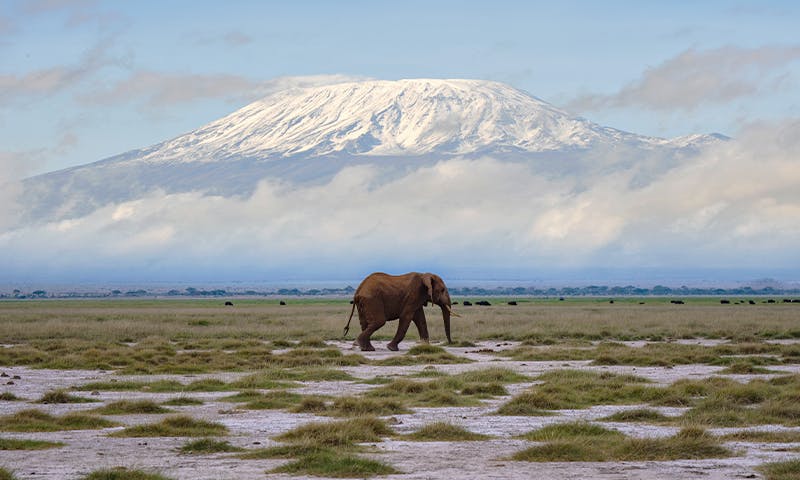TTanzania’s Mount Kilimanjaro is the highest mountain in Africa, rising 19,340 feet above sea level. The summit of Kilimanjaro has been covered in ice for almost 12,000 years, starting from dense rainforests through shrubby moorlands and sparse alpine desert.
The Chagga and Maasai communities living in the foothills of the mountain consider the snow-capped peak as the seat of God. Since the first recorded ascent in 1889, it has attracted adventurers from all over the world, including Ethiopian emperors and United States presidents.
However, the iconic icecaps above the Tanzanian landscape are about to disappear. Many other peaks across the continent, including neighboring Mount Kenya and the Rwenzori Range, are also experiencing rapid melting of glaciers. All of these African glaciers are melting so fast that the entire continent is expected to become ice-free within a few decades, according to Douglas Hardy, a climate and glacier scientist at the University of Massachusetts. This would be the first time in thousands of years that any continent on Earth has been completely glacier-free.
The area covered by glaciers in East Africa has shrunk by half over the past 25 years.
Hardy has been studying Kilimanjaro’s glaciers since 2000 and, along with researcher Anne Hinzmann, has recently published a study that evaluated the extent of the dramatic glacier loss throughout East Africa. Hardy stated, “The key point is that we are now very close to losing all African glaciers, along with their environmental archive and touristic appeal.” When glaciers vanish, the scientific data they contain about past climate and many other aspects of the environment also disappear. a new paper Hardy reports that the most significant retreat has occurred at Kilimanjaro’s Furtwängler Glacier, which has long been a camping site for daring climbers. It has experienced an astonishing 70 percent reduction in size between February 2020 and October 2023. Once a vast ice cap, Furtwängler is now little more than a jagged white shard, a relic of centuries past.
Analysis of satellite images of the glaciers across Kilimanjaro, Mount Kenya, and the Rwenzori Range in 2021 and 2022 indicates that the total glacier-covered area in East Africa has decreased by half over the past 25 years. Mount Kenya lost over half of its glacier mass in 2016 alone, while the three remaining glaciated mountains in the Rwenzori Range have experienced a glacier retreat of 67 percent since 2005.
Tropical glaciers are not exclusive to East Africa. They are also present in the Andes Mountains of South America and the Sudirman Range in Indonesia. In tropical regions, glaciers are only found at high altitudes. These glaciers are particularly vulnerable to increasing global temperatures and are retreating faster than polar glaciers. For instance, Greenland’s peripheral glaciers are also retreating.
We are now perilously close to losing all African glaciers, with all that entails.
twice the speed today compared to the 20th century. The disappearance of the glaciers in East Africa will significantly impact
the health of a variety of African ecosystems, impacts decreasing the amount of water accessible to rivers and to native plants and animals, harming water supply for local human populations that are already experiencing water scarcity due to changes in seasonal rain patterns, and increasing the risks of dangers such as avalanches. The loss of the glaciers on Kilimanjaro specifically could also undermine the local livelihoods of the thousands of Tanzanians who work as guides and porters on the mountain’s slopes, providing for their families with income earned from tourism. It is yet to be seen whether the interest in climbing Africa’s highest mountain will decrease when its glaciers have disappeared—aside from the change in the visual spectacle, an increase in geological hazards could make climbing the mountain less safe—but in the meantime, there may be an increase in interest, travelers looking for a final glimpse of the ice. Some refer to this type of travel as
“climate doom” tourism—the rush to see vanishing landscapes before they disappear. Lead image: Hyserb / Shutterstock
The decline of ice on Kilimanjaro and other peaks will disrupt ecosystems and livelihoods.



